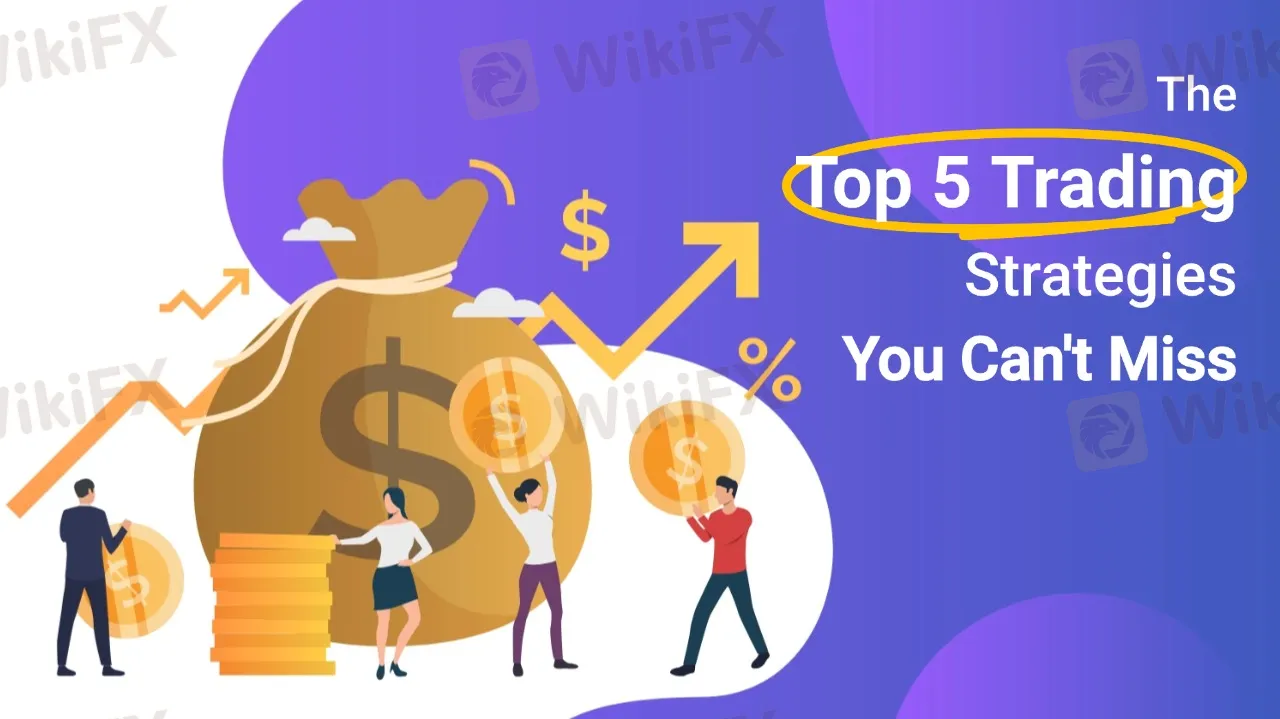The Top 5 Trading Strategies You Can't Miss
Abstract:In forex trading, there is no absolute winning strategy. However, why do so many traders ultimately fail? Let’s explore the reasons behind this and learn about some common trading strategies and techniques.

There is no magic bullet in forex trading, but many traders fail due to the lack of an effective trading strategy. Understanding the factors driving market volatility, mastering key support and resistance levels, and skillfully using strategies such as Fibonacci retracements and Bollinger Bands are crucial for any forex trader.
Whether you are engaged in short-term trading lasting minutes or long-term trading over several hours or days, it is vital to closely monitor how the market reacts near key support and resistance levels. Understanding these fundamentals helps identify potential opportunities in the forex market.
Strategy 1 - Reversal Strategy
Reversals often occur when prices hit key support or resistance levels. Many traders choose to enter trades when the price returns to these levels, either going long or short.

Strategy 2 - Loss of Momentum Strategy
If the price approaches a previous high and starts to stagnate, it could be a sign that market momentum has run out. In this case, consider going short. This strategy focuses on finding sell opportunities when prices reach highs, especially when market momentum weakens.
Strategy 3 - Breakout Strategy
When prices break through significant previous highs or lows, it may signal a change in market direction. In this case, traders can enter trades in the direction of the breakout, capturing the new trend.
Strategy 4 - Retest Strategy
When a support level is broken, market sentiment can shift. Using a retest strategy, traders can assess whether the market will continue to decline. Its important to note that false breakout signals sometimes occur, so caution is necessary.
Strategy 5 - Overbought/Oversold Strategy
Using the RSI (Relative Strength Index) indicator, traders can monitor whether the market is overbought or oversold. When the RSI is above 70%, the market is considered overbought, while below 30% indicates its oversold. In such cases, a contrarian trading strategy might be more effective.

From reversal strategies to overbought/oversold strategies, understanding and applying these methods will help you better handle market fluctuations, reduce losses, and improve your chances of success.
Read more

CySEC reaches €20k settlement with ZFN EUROPE
According to report, the Cyprus Securities and Exchange Commission (CySEC) announced today that it has entered into a settlement agreement with ZFN EUROPE Ltd for the amount of €20,000. This settlement resolves a regulatory inquiry into ZFN Europe’s compliance with Cyprus’s Investment Services and Activities and Regulated Markets Law of 2017, as amended.

Broker Comparsion: FXTM vs AvaTrade
FXTM and AvaTrade are two well-established online brokers offering forex and CFD trading across global markets. Both enjoy strong reputations and high ratings on WikiFX—FXTM holds an AAA overall rating, while AvaTrade scores 9.49/10, indicating they’re regarded as reliable choices by the community. However, since brokers have great reputation in the industry, how do we know which one is more suitable for individuals to invest in? Today's article is about the comparison between FXTM and AvaTrade.

Prop Trading Firms vs. CFD Brokers: Who’s Winning the Retail Trading Race?
In recent years, a new breed of retailer-focused trading firms has emerged: proprietary (prop) trading outfits that recruit individual traders to trade the firm’s capital under structured rules. Boasting low entry costs, clear risk parameters, and profit-sharing incentives, these prop firms are rapidly winning over retail traders, many of whom previously traded Contracts for Difference (CFDs) with established online brokers. As prop trading revenues accelerate, a key question arises: Are CFD brokers losing business to prop firms?

Shocking Move: Yen Breaks Past 140 Barrier!
The yen's breakout above the 140 mark has caught global attention, and the reasons behind it are more than technical.
WikiFX Broker
Latest News
Love, Investment & Lies: Online Date Turned into a RM103,000 Scam
Broker Took 10% of User's Profits – New Way to Swindle You? Beware!
Pi Network: Scam Allegations Spark Heated Debate
Broker Comparsion: FXTM vs AvaTrade
Account Deleted, Funds Gone: A New Broker Tactic to Beware Of?
Broker’s Promise Turns to Loss – Funds Disappear, No Compensation!
StoneX Subsidiary, Gain Global Markets Bermuda, Penalized for Trading Misconduct
El Salvador and U.S. Launch Cross-Border Crypto Regulatory Sandbox
The Instagram Promise That Stole RM33,000
Coinbase Launches Bitcoin Yield Fund for Institutional Investors
Rate Calc
